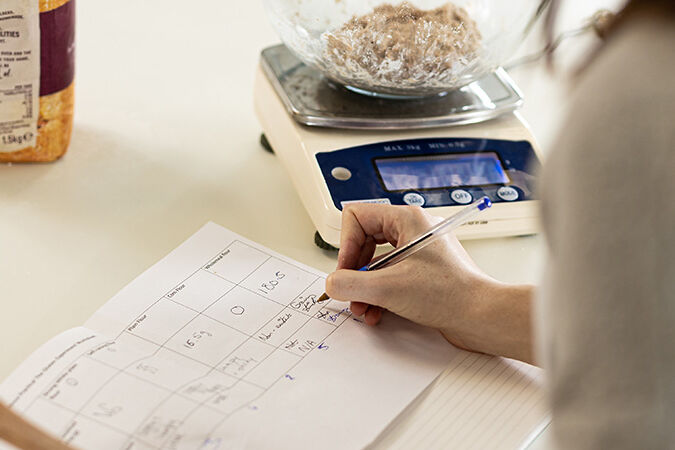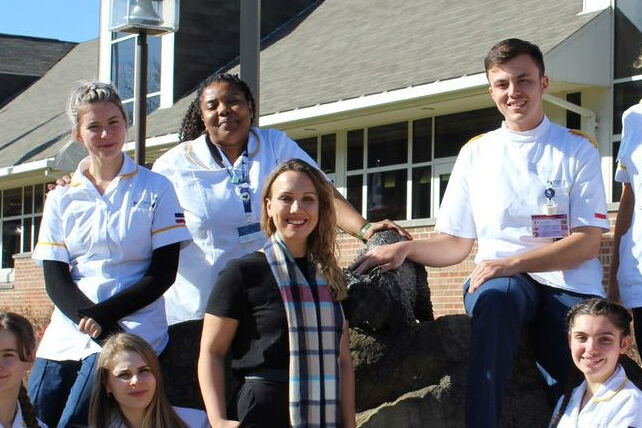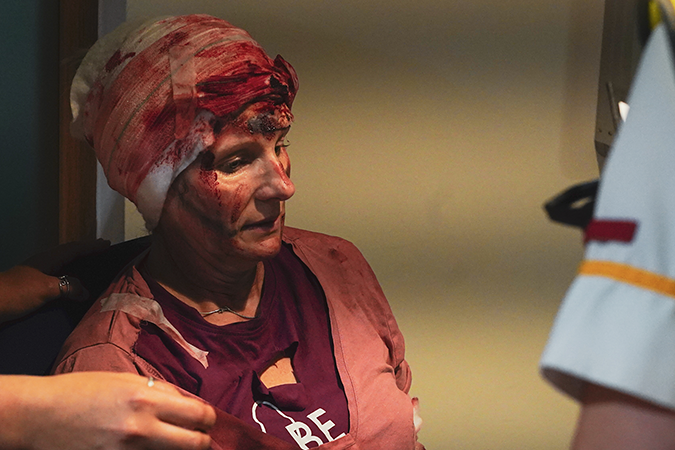
Blog

Almost four years ago, on the 23 December 2015, Ellie began to feel ill. But this wasn’t just your common cold. Below, Ellie, a Primary Education with QTS student details the terrifying experience she had with sepsis and gives you tips on how to spot the infection. #WearRedDay for Sepsis is 19 July 2019.
“My body went really cold, so much so that my teeth were chattering, my body was aching and shivering and overall I just really didn’t feel like myself. During that night, I had sickness and diarrhoea and just presumed I had a sickness bug.
The next morning it was Christmas Eve, but like none I’ve experienced before. I can’t remember much about that morning as I was so delirious but I knew I had never felt like this before. I hadn’t passed urine all night or morning, which at the time I didn’t think much of. My legs were extremely weak and I was struggling to even stand up, this is when I collapsed in the bathroom and my mom ran in and noticed a ‘mottled’ rash on my arms. My speech was so slurred that I was unable to communicate how I felt. My lips and nose had turned blue so my mom immediately called an ambulance. They arrived in a matter of minutes and gave me antibiotics which I later found out had in fact saved my life.
When I arrived at hospital my blood pressure was extremely low at 40/20 and my temperature was dangerously high so I got rushed into resuscitation. I heard a doctor on the phone to the microbiologists at Heartland’s discussing which antibiotic to use as my blood was so badly poisoned. As I was so poorly, the consultants were unable to carry out tests on me to find out what was wrong with me. I think at this point they knew I had Sepsis because my blood was so badly poisoned that it was beginning to turn into Septic Shock. It got to the point where my parents were advised to get the rest of the family to the hospital as I was critically ill and may not make it through the night. Some of my major organs were beginning to become compromised due to the Sepsis.
However, on Christmas day I woke up feeling a little better, or so I thought. A build-up of fluid on my lungs caused my breathing to become more and more shallow. A few days later, the consultants and my family made the decision to put me in an induced coma to improve my breathing. This seemed to work and within 24 hours I was released from intensive care and put onto a ward.

This is when I noticed my index finger on my right had had turned black and I was unable to move it. The doctors explained this was due to the blood poisoning and I was very lucky that it only attacked one of my fingers as it is common for people to lose arms and legs when fighting Sepsis. A few weeks later, whilst recovering at home, the skin on my finger slowly began to re-grow new skin cells and the dead skin fell off, with the underneath having healed itself.
Myself and my family were unaware of the symptoms of Sepsis before I became ill, which is why it is so important for people to be aware. According to the UK Sepsis Trust, there are around 250,000 cases of sepsis a year in the UK and at least 46,000 people die every year. I am one of the lucky ones who only suffered minor problems after having Sepsis, but this did not stop me from following my goals and working hard to get accepted into Birmingham City University 2 years later to study Primary Education. I only have 1 year left now until I am a qualified teacher, yet to this day I am still extremely grateful to be happy and healthy, compared to having the worst Christmas of my life suffering with Sepsis in 2015."
Here’s a few tips on how to spot Sepsis in adults. Seek medical help urgently if you, or another adult develop any of these signs:
- Slurred speech or confusion
- Extreme shivering or muscle pain
- Passing no urine (in a day)
- Severe breathlessness
- It feels like you’re going to die
- Skin mottled or discoloured
Education Courses
Find out more about our courses




